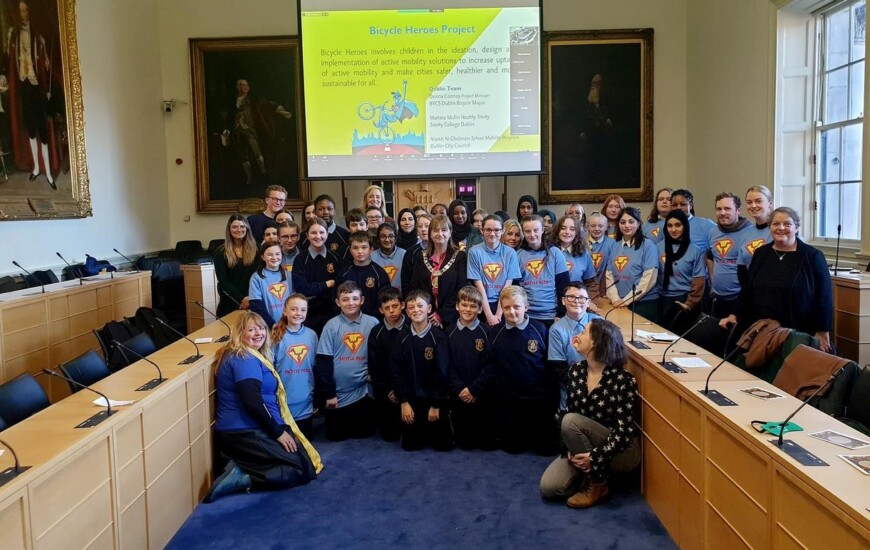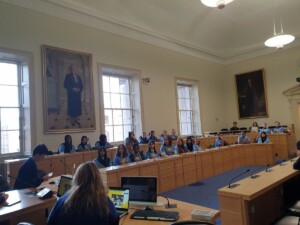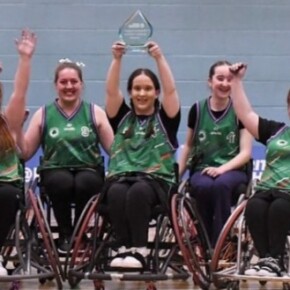40 Dublin students present ideas to DCC on how to improve cycling infrastructure
Gary Ibbotson 19 Oct 2022
LAST week 40 Dublin school children and teenagers presented their ideas to Dublin City Council about how to increase participation in cycling in their local communities.
The students, aged between 10 and 15, consisted of fifth class pupils from Scoil Eoin in Kilbarrack and third year pupils from Loreto College in Crumlin and are members of the Dublin Youth Bicycle Heroes.
The students were tasked with creating solutions to cycling barriers on their route and to Trinity College.
They presented their ideas to the Lord Mayor of Dublin councillor Caroline Conroy and other decisions makers, city engineers and change makers in Dublin City Hall Council Chamber.
Lord Mayor Caroline Conroy said she was “delighted” to listen to the ideas of young people who are enthusiastic about improving the experience of cycling around the city.
“I cycle myself and I welcome these ideas to make cycling safer and more enjoyable in our city and communities,” she said.
Councillor Donna Cooney, project manager of the Dublin Bicycle Heroes Project said: “I’m so excited about coordinating the first BYCS Bicycle Heroes project in Dublin with partners Dublin City Council and Trinity College.

“We worked with groups of children aged 10 to 15 years, to give them the tools to enable them to reimagine their city space to meet their needs.
“Children are now empowered by designing, exhibiting and presenting to transport engineers, planners and decision makers to influence the design of Dublin City spaces for their own future active transport needs.”
The programme has been piloted by coordinating organisation BYCS over the last five years in the Netherlands.
BYCS is an Amsterdam-based global NGO supporting community-led urban change through cycling.
Martina Mullin of Trinity College said the university is “pleased to see so many clever and innovative ideas from the children for travelling from their school to our campus.
“Trinity has one percent car use.
“We’re delighted to see children question how public space in Dublin can be allocated to support health, biodiversity and the climate.”
Nearly 10,000 children have taken part in the initial awareness and problem-solving phase of the program across the EU.
“This project has helped Dublin City Council to get ideas from students on the design, development and evaluation of their school zones and safe routes to school,” said Niamh Ni Cholman from the Dublin City Council school mobility programme.
“Children who become Bicycle Heroes in school zones promote safer and more respectful driver behaviour within their families and communities,” she said.











